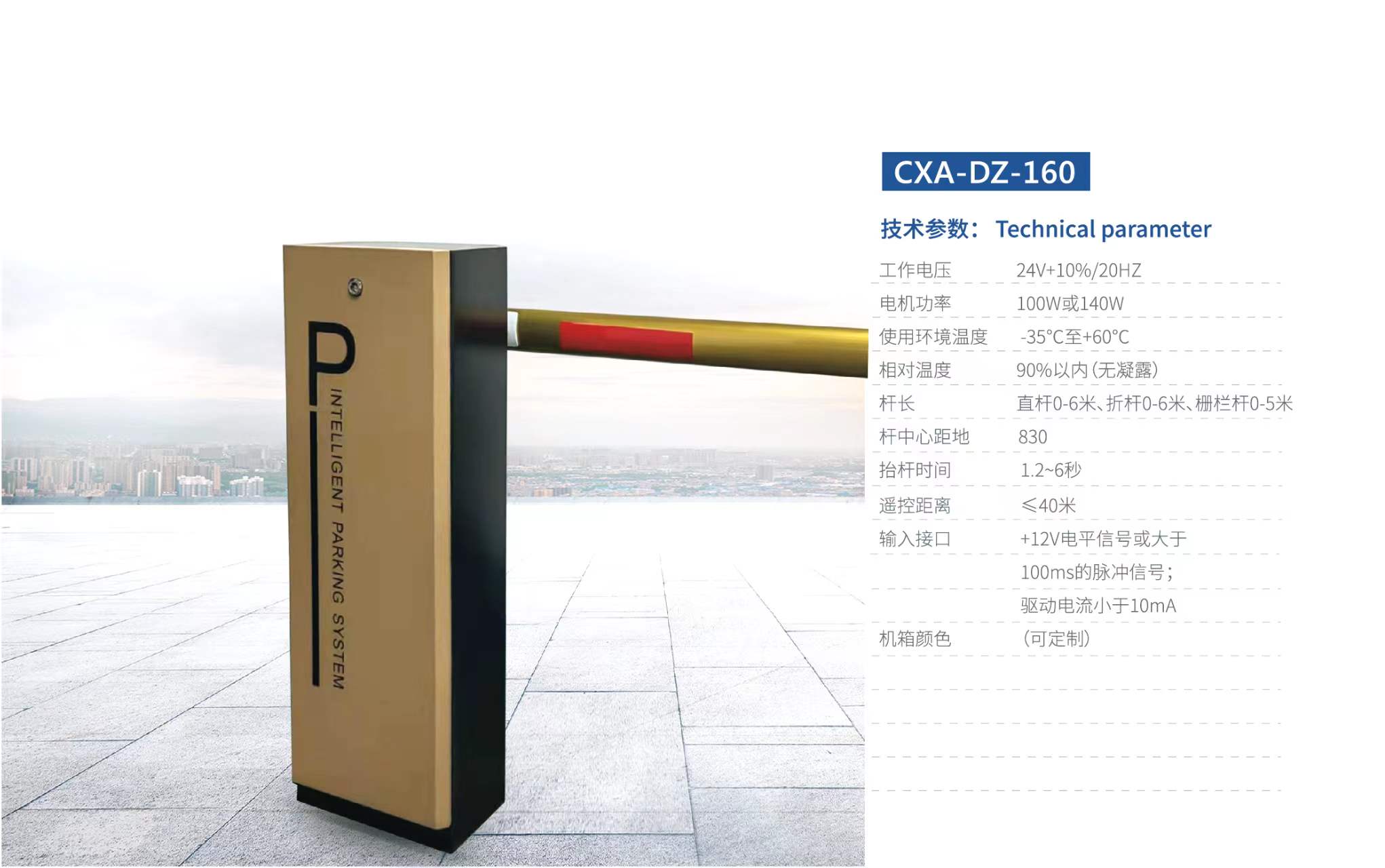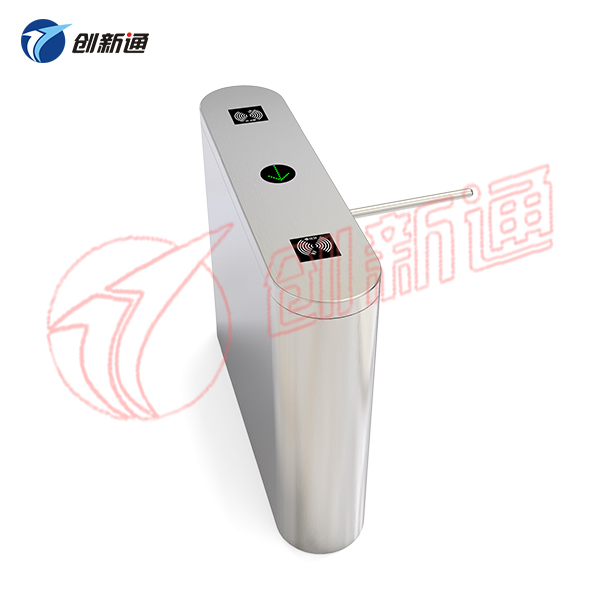HOW DO BOOM GATES WORK?
A boom barrier goes by many names. Sometimes called a barrier arm, a boom, a boom gate, or an access barrier arm; these all mean the same thing. A boom barrier arm is a gate or access point that regulates traffic flow by means of a long arm that pivots on the opener. The arm is also called a boom. This might be familiar to anyone that has used a microphone before since this term is also used for the arm that holds a microphone. The opener or operator is the entire structure that moves the arm up and down. They come in many different shapes and sizes depending on the application and where they will be installed.

Barrier openers are typically used in access areas where traffic needs to be regulated. Areas such as parking garages, toll roads, car washes, private roads, railway crossings, and security checkpoints are where most boom barrier openers will be. The length of the arm is generally anywhere from 6' (1.8 m) all the way up to 33' (10 m). Applications that need longer booms are places that need large, wide lanes for buses and trucks, such as a business driveway or an airport. Parking garages may only need smaller-length barrier arms since only one vehicle should be passing at a time.

Barrier arms can be operated in a number of different ways. Some of them are still manually operated, or at least can still be if the power goes out. Most of the others, though, are automatic. This allows the user to conveniently use the gate without the need to get out of the vehicle. The gate automatically opens and closes via different sensors that tell the barrier arm what to do. Photo Eyes are the most common type of sensor that detects vehicles. They're also required in order to comply with the UL 325 Safety Standards. Loop Detectors are another very common sensor that access gates use. These are popular for traffic lights as well. They work by installing a wire just under the surface (usually concrete or asphalt) and connecting it to a loop detector. There is a small electrical current running through the wire, and when something changes the level of current in the wire, it is detected and will trigger whatever action is programmed. Loops work by induction rather than magnetization.

What Are Boom Gates And How Do They Work?
Boom gates are security access barriers used to control vehicle traffic flow. They are mostly used in the parking areas of residential complexes, shopping centres, and toll booths. Generally, they are available in two types; automatic and manual.
Automatic boom barriers use optical sensors or motion detectors for their functionality. Additionally, these barriers use an ‘amperometric device’ which is designed to ensure the safety of the boom gate system through obstacle detection. This amperometric device prevents the boom arm from suddenly lowering when a vehicle is in the passage.
On the other hand, manual boom barriers are a cost-effective solution that works on the spring balance mechanism. They are mostly used when electric power is unavailable or at locations requiring less usage of the access gates. However, automatic boom gates are most commonly used for their high performance.
Automatic Boom Gates
An in-depth understanding of these access control systems, their utility, and who can benefit by utilising their safety and security features will help you make the best choice for your business. Moreover, it is important to know how these automatic barriers help increase the efficiency of your business, how boom gates work, and whether the gate’s functionality suits your business needs.
Automatic security barriers such as automatic boom gates and automatic bollards, as mentioned earlier, are used primarily for traffic control, be it pedestrian or for any vehicle access. The utility and benefit of boom gates go well beyond:
Save money on labour overheads
Investing in multiple security guards for different times of the day and paying them wages for months together can be quite costly. However, boom barriers being a one-time investment, is the most cost-effective solution for your business.
Automatic control of heavy traffic flow
With limited parking space for areas like airport car parks and shopping centres, boom gates can be used to control the flow of traffic in and out of these premises and restrict further traffic inflow when the premises is completely occupied. Moreover, it can also be used to prevent access to restricted areas.

Save space on the premises
Having a security guard might require your business to set up a booth to facilitate ticket collection or check the identity of the visitors to the business premises. Boom gates, on the other hand, only require a small amount of space for the bar to move vertically upwards and back to its normal position. This feature makes boom gates the most convenient option to have almost anywhere.
Multiple location utility 
The usage of these automatic boom barriers applies to hospital car parks, residential parking for apartment complexes or garages, shopping centres, public event venues, sports or other arenas, railways, mine sites, and more. Furthermore, these are used to control pedestrian access, for instance, the ones most commonly used in train stations.
It is beneficial to install these kinds of safety barriers to reduce the hassle involved in managing the complexities of traffic control. However, for making a rational choice to protect your business, it is imperative to know the wide range of features that would be best suitable. Some of the key features of the boom gate system are:
1. Self-learning:
The radio code between the transmitter and receiver learns to encode and decode independently.
2. Automatic closure:
The cable gate operates after the pre-set time on the dedicated trimmer is set to close the gate.
3. Obstacle detection with motor off :
This function allows the photocells to stop the barrier from moving if they detect an obstacle, even with the motor off.
4. Amperometric device : 
These access systems use an amperometric device for obstacle detection to achieve maximum (adjustable) sensitivity. These help the bar to quickly react in the event of being in contact with any foreign bodies.
5. “Man present” control:
This means the push button must be kept down for the gate to move. This functions much like an emergency button to manually avoid any unexpected hazard.
6. Slow down during opening and closing
This helps the bar to make smooth and easy stops.
7. Immediate closure in the event of obstacle detection
The safety of your business premises is not compromised by using an amperometric device. However, immediate closure in the event of obstacle detection is used to obtain maximum operation safety. Here, the automation immediately sends the bar into reverse in the event of contact with an obstacle.
Boom Gates,boom gates,Boom gates ,Are Boom Gates,
8. System Integration
Safety accessories connection is established for system integration with all the devices provided by current automation standards.
9. Manoeuvre speed adjustment
Turnstile gate |Flap turnstile |Outdoor turnstiles|Outdoor turnstile |Turnstile technology | Flap barrier gate |Revolving gate|Flap barrier | Turnstile suppliers
Puerta de torniquete | Torniquete de aleta | Torniquete de exterior | Torniquete de exterior | Tecnología de torniquetes | Puerta de barrera de aleta | Puerta giratoria | Barrera de aleta | Proveedores de torniquetes
Safe and fast automation is ensured by adapting to effective passage requirements (for both larger and smaller passageways) and achieving the greatest system mo



 中文
中文




